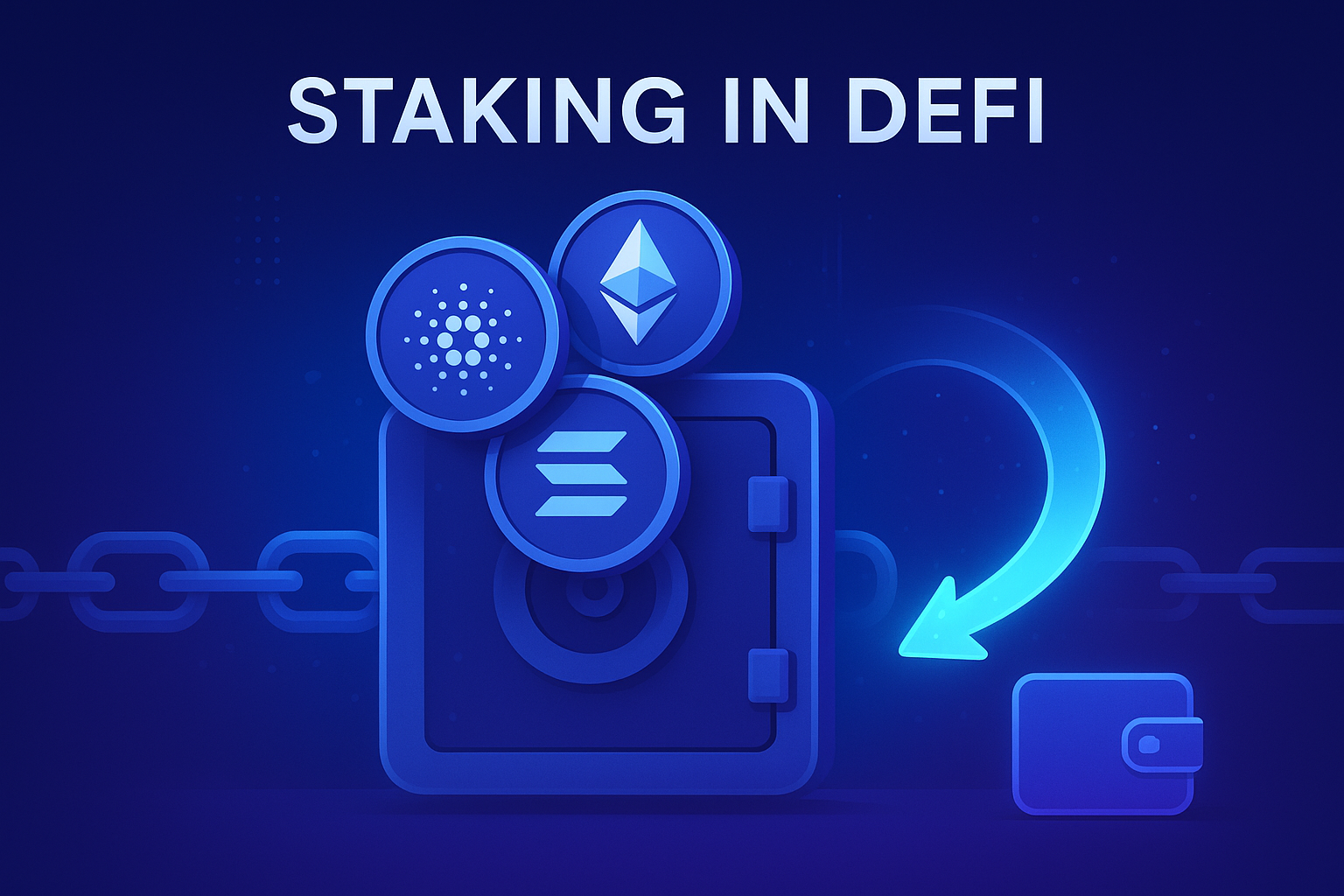Decentralised Finance (DeFi) has opened up a new world of opportunities for investors looking to grow their wealth outside of traditional banks. One of the most popular ways to earn in DeFi is staking, a process that lets you earn rewards simply by holding and “locking up” your crypto. But what exactly is staking, and how can you get started safely?
In this article, we’ll break down the basics of staking, its benefits, risks, and practical steps for beginners.
What is Crypto Staking?
Staking is the process of committing your cryptocurrency to help secure and support a blockchain network. In return, you earn rewards — usually paid in the same token you staked.
It’s possible because many blockchains, like Ethereum, Solana, and Cardano, use a system called Proof of Stake (PoS) to validate transactions. Instead of relying on energy-intensive mining, these networks depend on stakers who lock up their coins to keep the system running smoothly.
How Does Staking Work?
-
Choose a PoS token – Not all cryptocurrencies can be staked. You’ll need tokens like ETH, SOL, ADA, DOT, or others that run on a Proof of Stake network.
-
Lock your tokens – You deposit (or “delegate”) your tokens into a staking pool or validator node.
-
Earn rewards – In return for supporting the network, you earn rewards, typically ranging from 4% to 20% annually, depending on the token and platform.
Benefits of Crypto Staking
-
Passive income – Your tokens work for you while you hold them.
-
Network security – By staking, you help secure and decentralise the blockchain.
-
Compounding potential – Some platforms allow you to automatically reinvest your rewards for exponential growth.
Risks of Crypto Staking
Like any investment, staking isn’t risk-free:
-
Price volatility – Even if you earn rewards, the value of your staked token could drop.
-
Lock-up periods – Some staking platforms require you to lock your tokens for weeks or months, limiting liquidity.
-
Slashing risk – On some networks, if a validator misbehaves, a portion of your stake could be lost.
Where Can You Stake?
There are three main ways to start staking:
-
Crypto Exchanges – Platforms like Coinbase, Binance, and Kraken offer easy staking services.
-
Wallets – Many wallets (e.g., MetaMask, Phantom) let you delegate directly to validators.
-
DeFi Protocols – Platforms like Lido, Rocket Pool, or Marinade offer liquid staking, where you receive a “staking token” you can use elsewhere in DeFi while still earning rewards.
Crypto Staking vs. Yield Farming: What’s the Difference?
Staking is often confused with yield farming, but they’re not the same:
-
Staking supports the blockchain network and earns protocol rewards.
-
Yield farming involves lending or providing liquidity to DeFi protocols to earn interest or fees.
Both can generate income, but staking is generally considered simpler and safer for beginners.
Tips for Beginners
-
Start with a trusted exchange or staking service if you’re new.
-
Research the staking rewards and risks for each token before locking funds.
-
Consider liquid staking if you want flexibility.
-
Never stake all your holdings, diversification is key.
Final Thoughts
Staking is one of the simplest ways to participate in DeFi and earn passive income. While it comes with risks, it also offers steady, predictable rewards compared to more complex strategies like trading or yield farming.
If you’re new to decentralised finance, staking can be a great first step to grow your crypto while helping secure the blockchain networks you believe in.
👉 Next in our DeFi Basics series: We’ll explore Yield Farming — how it works, how it compares to staking, and how you can use it to maximise your crypto income.

